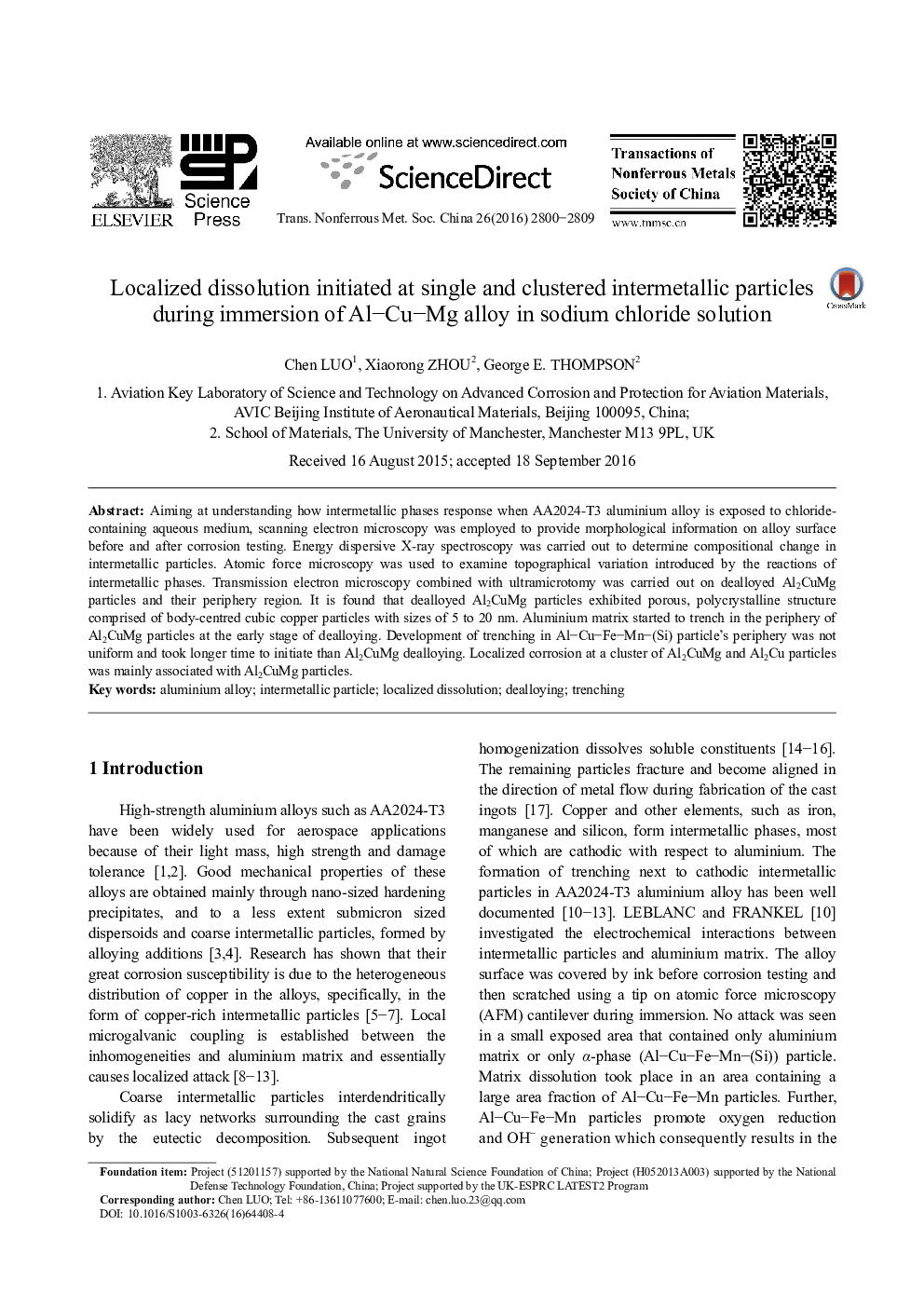| Article ID | Journal | Published Year | Pages | File Type |
|---|---|---|---|---|
| 8012143 | Transactions of Nonferrous Metals Society of China | 2016 | 10 Pages |
Abstract
Aiming at understanding how intermetallic phases response when AA2024-T3 aluminium alloy is exposed to chloride-containing aqueous medium, scanning electron microscopy was employed to provide morphological information on alloy surface before and after corrosion testing. Energy dispersive X-ray spectroscopy was carried out to determine compositional change in intermetallic particles. Atomic force microscopy was used to examine topographical variation introduced by the reactions of intermetallic phases. Transmission electron microscopy combined with ultramicrotomy was carried out on dealloyed Al2CuMg particles and their periphery region. It is found that dealloyed Al2CuMg particles exhibited porous, polycrystalline structure comprised of body-centred cubic copper particles with sizes of 5 to 20 nm. Aluminium matrix started to trench in the periphery of Al2CuMg particles at the early stage of dealloying. Development of trenching in Al-Cu-Fe-Mn-(Si) particle's periphery was not uniform and took longer time to initiate than Al2CuMg dealloying. Localized corrosion at a cluster of Al2CuMg and Al2Cu particles was mainly associated with Al2CuMg particles.
Related Topics
Physical Sciences and Engineering
Materials Science
Metals and Alloys
Authors
Chen LUO, Xiaorong ZHOU, George E. THOMPSON,
